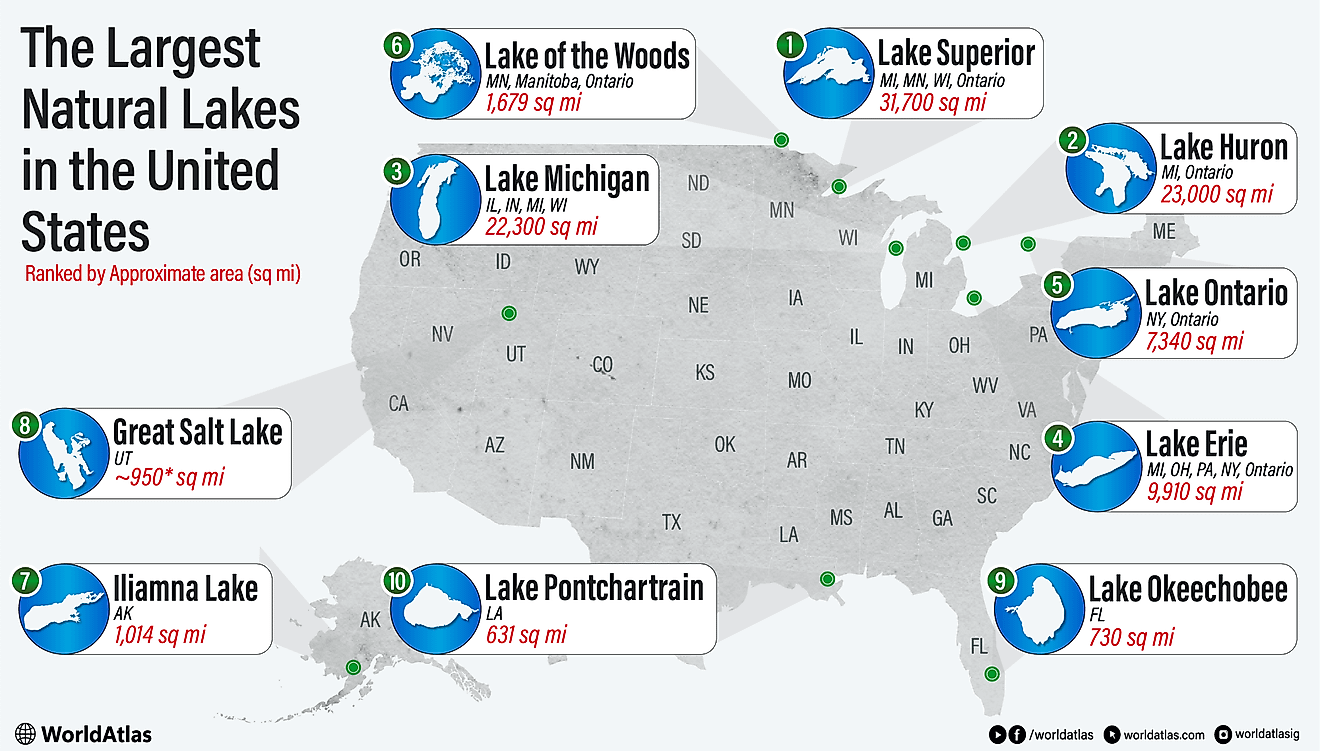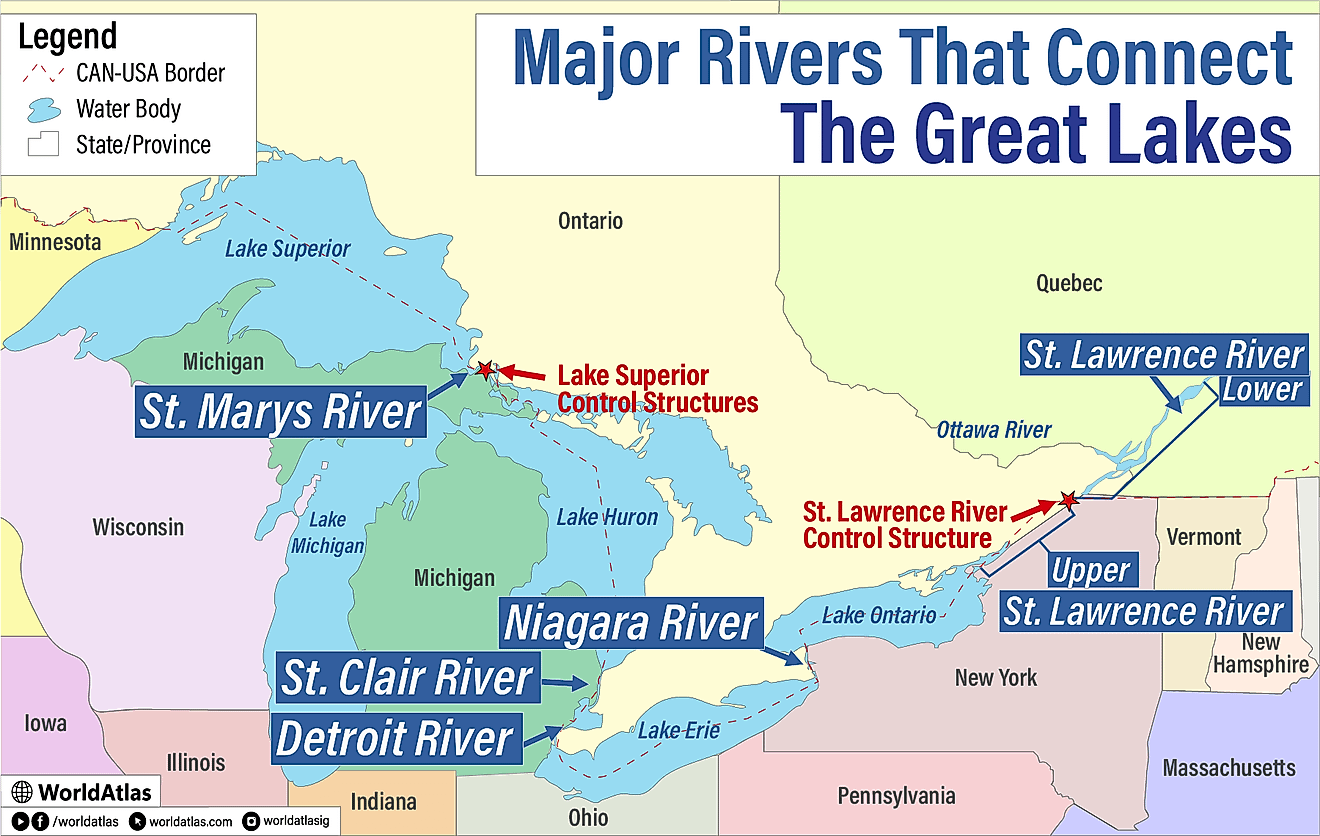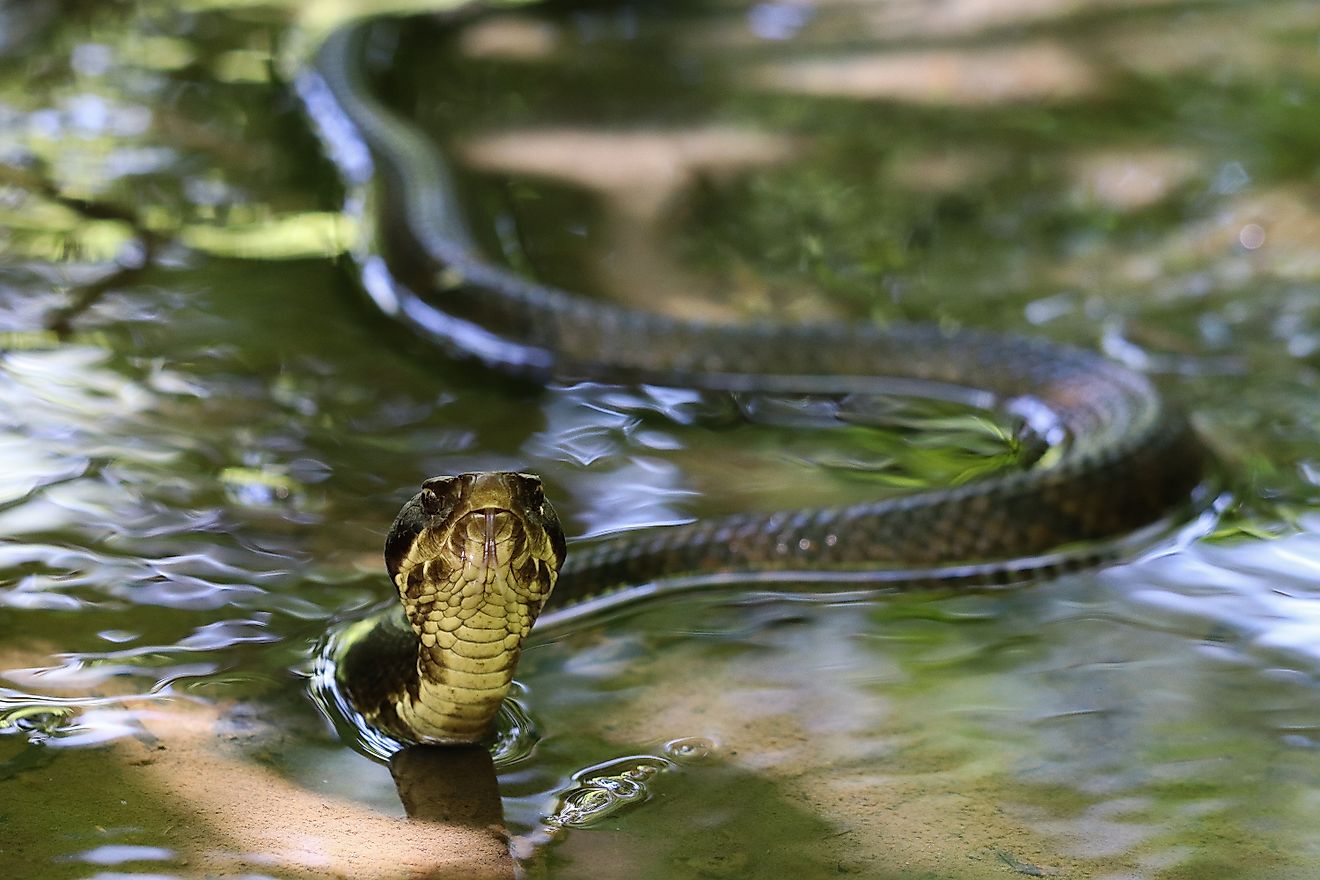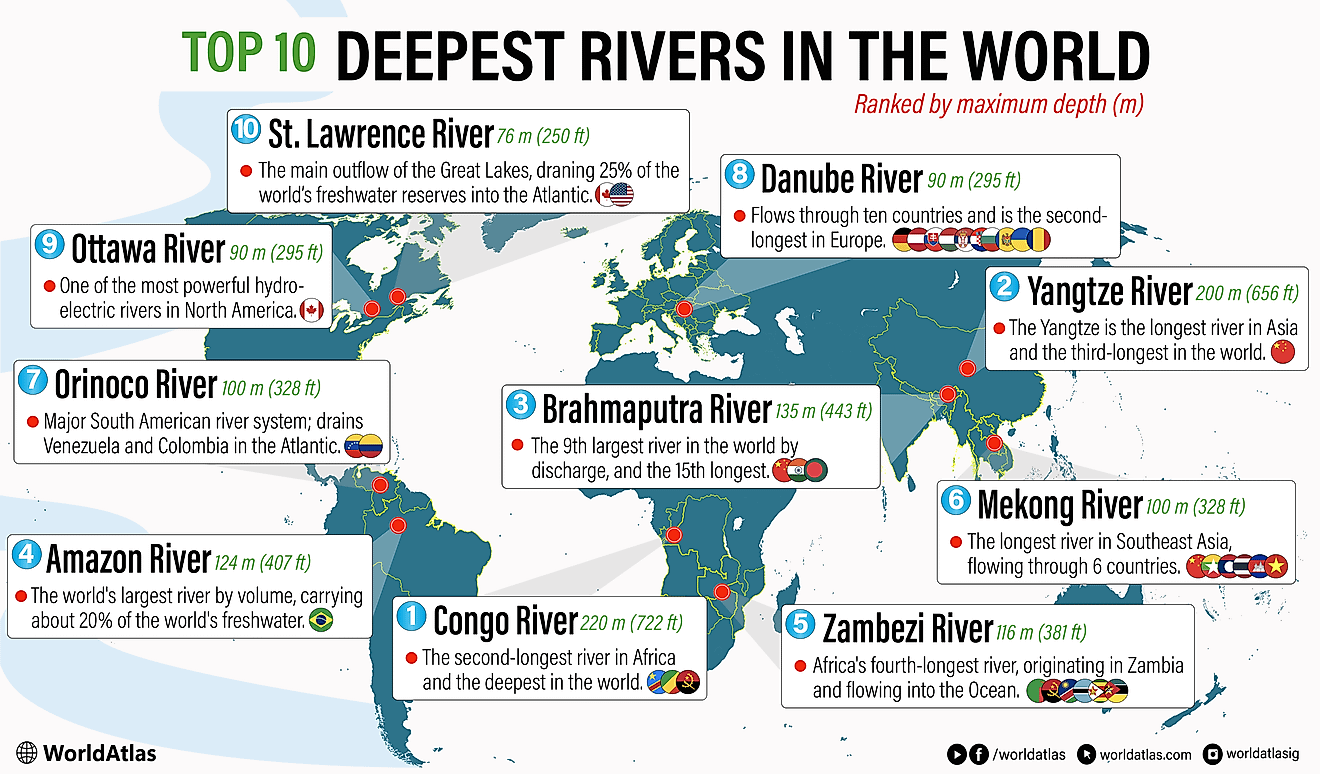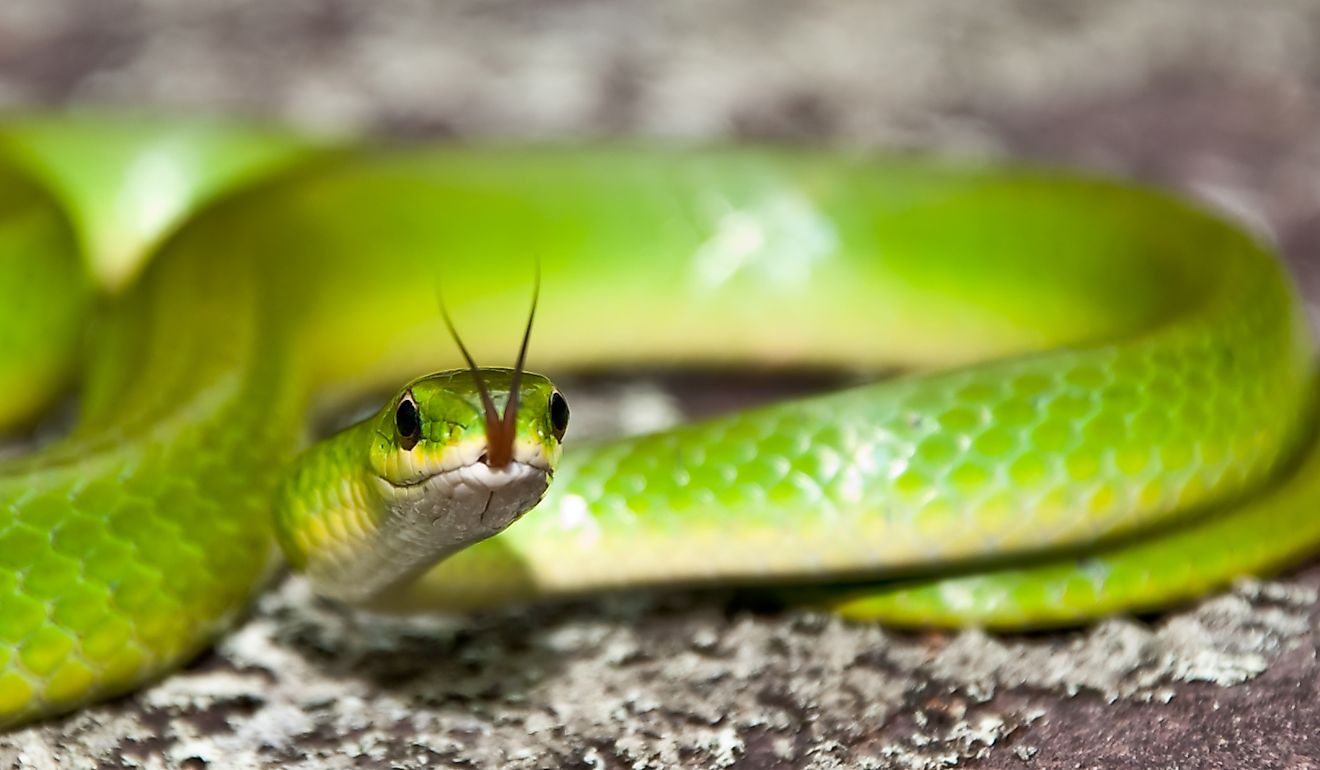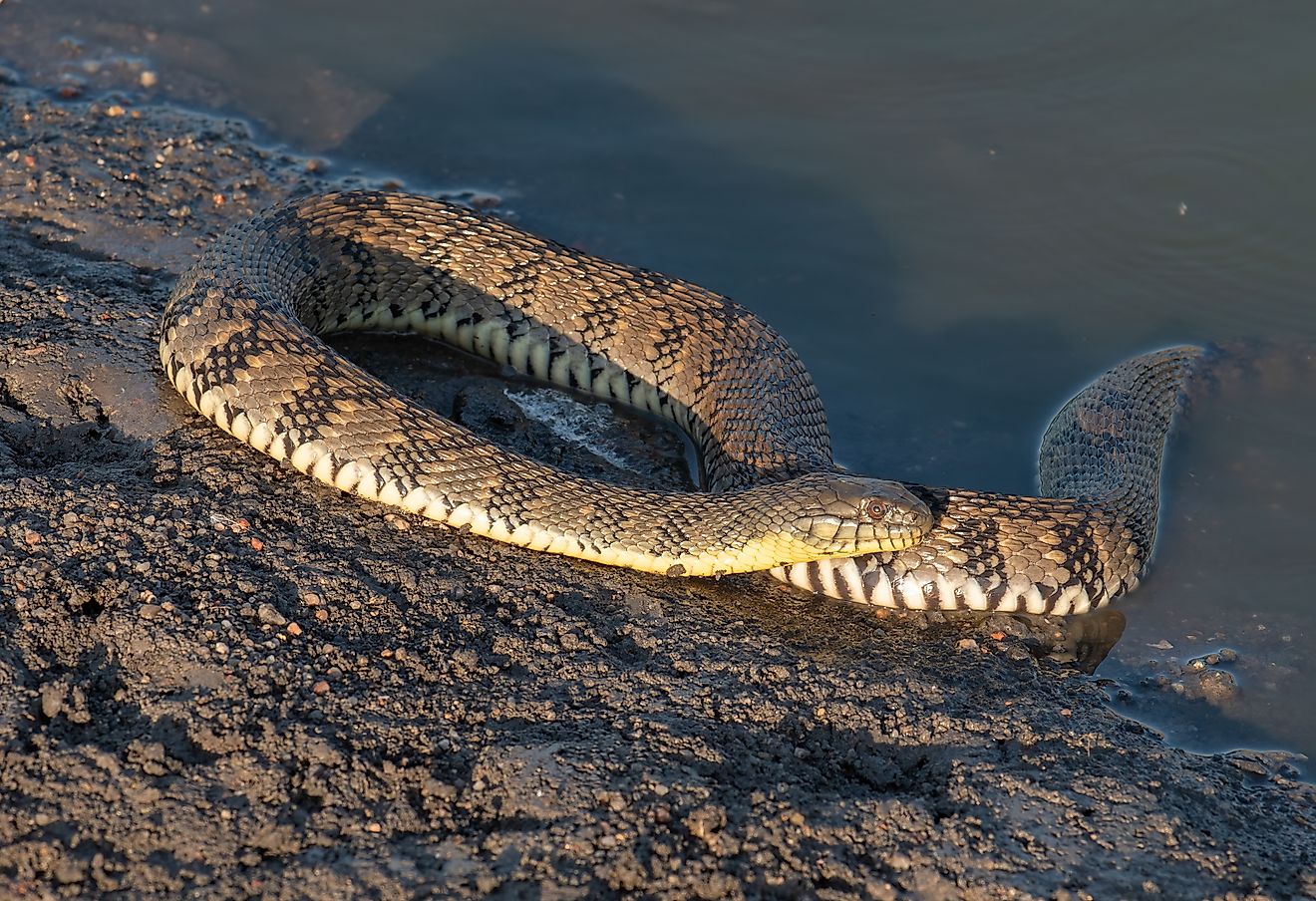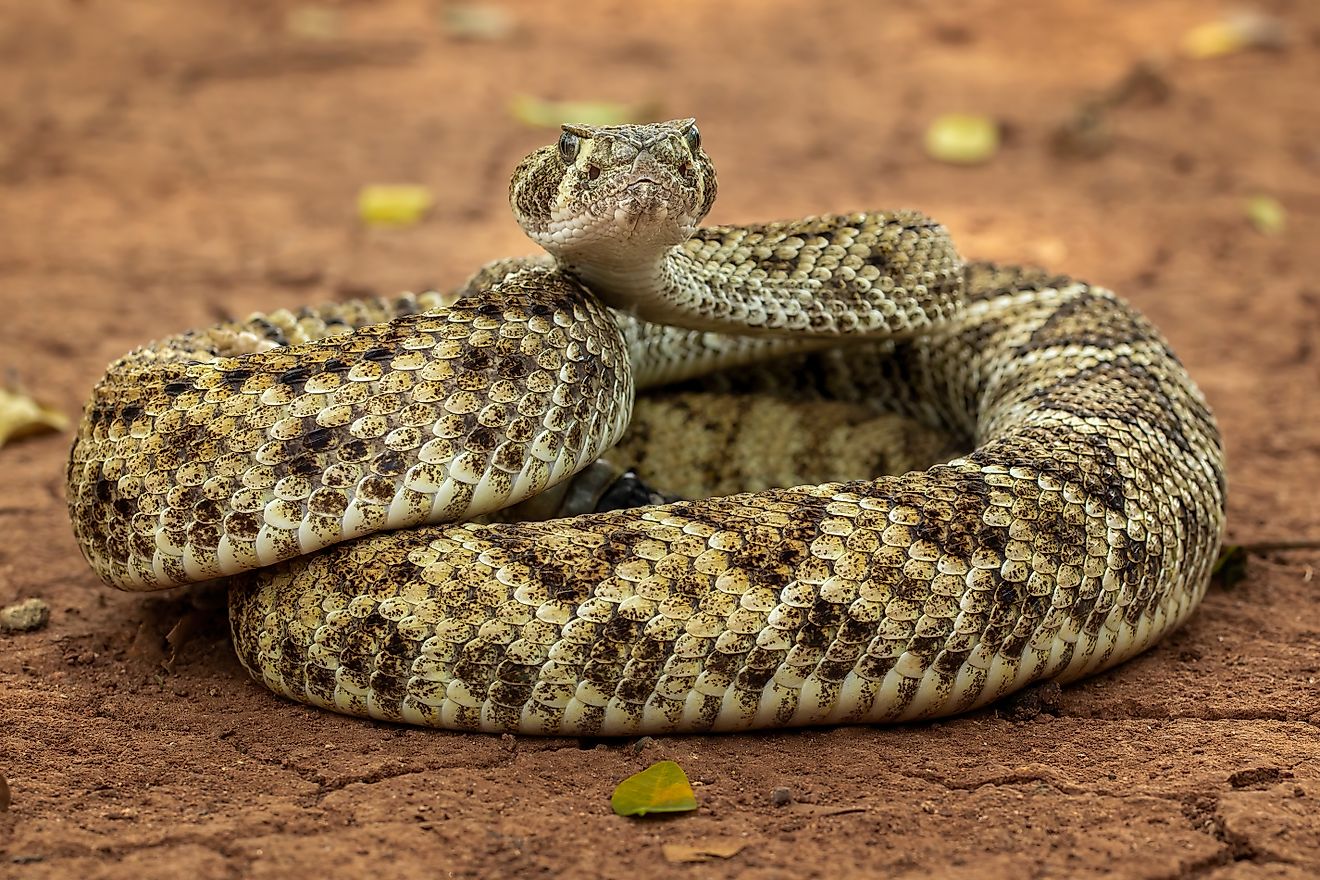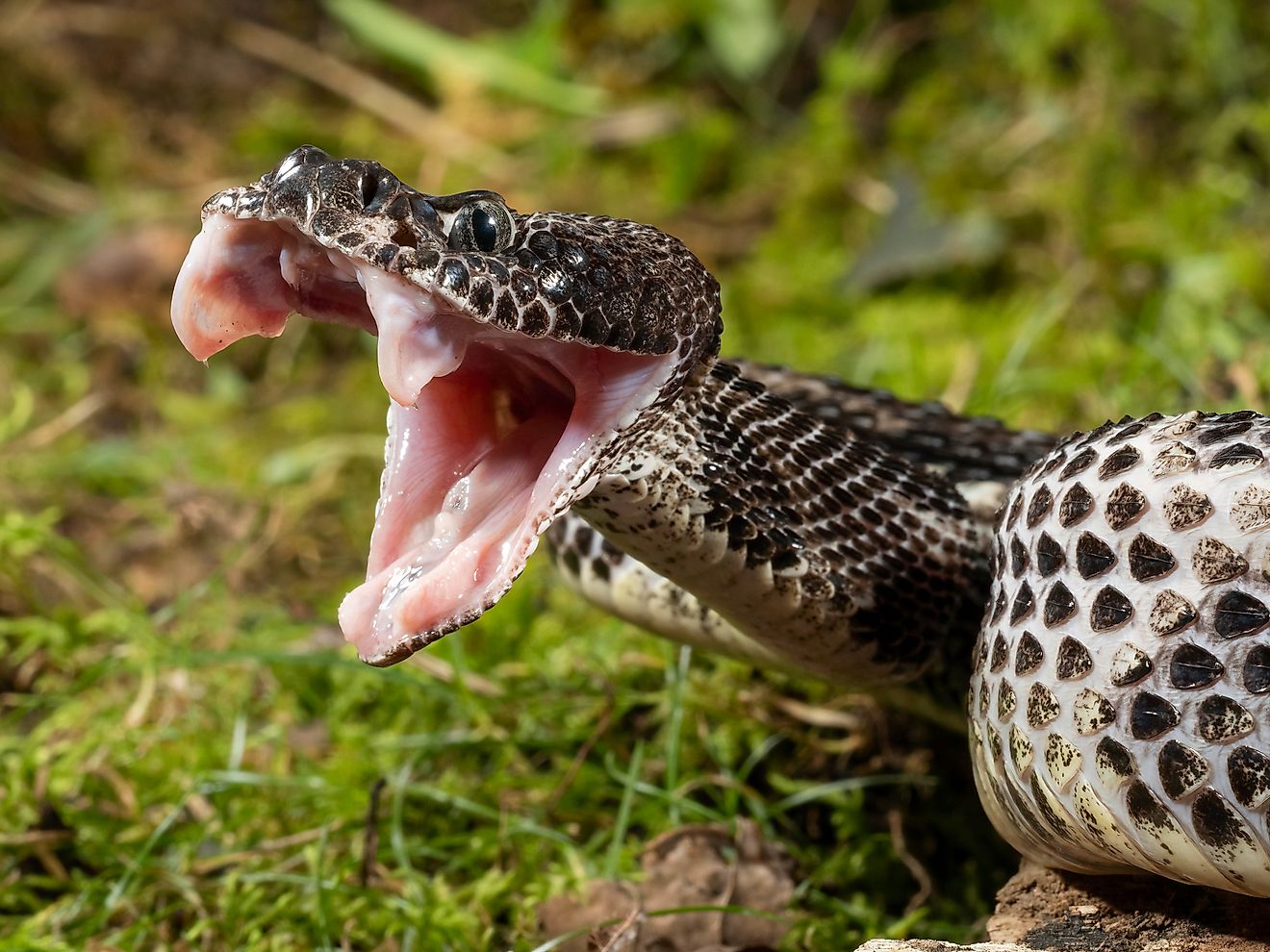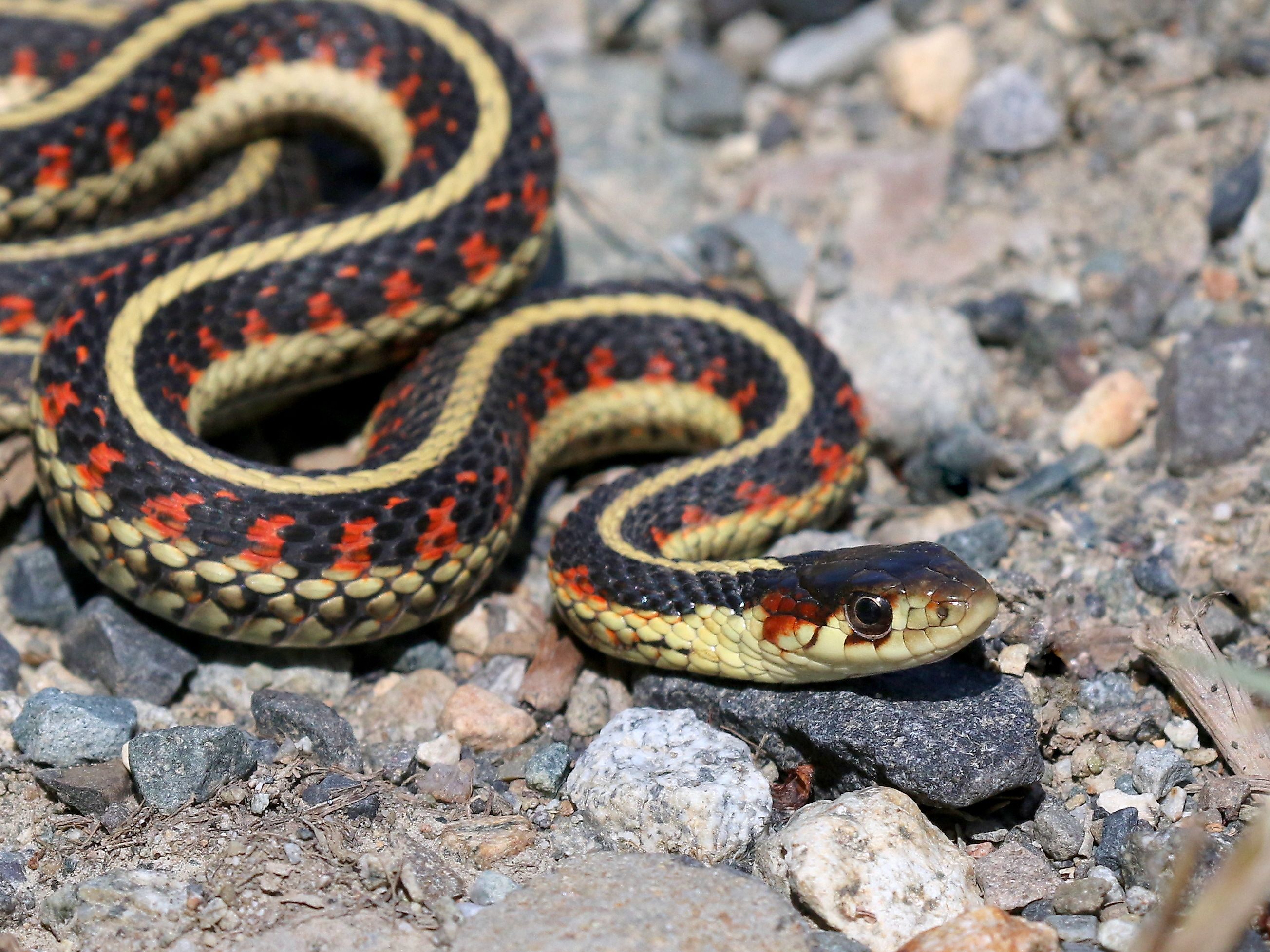
5 Most Snake-Filled Bodies Of Water In Delaware
The First State may not be the first state that comes to mind when raising the subject of snakes, or, for that matter, inland bodies of water. But Delaware, small as it may be, is actually home to 19 species of snakes and somewhere in the neighborhood of 30 public ponds and lakes. With that said, like the rest of the Northeastern United States, most of the known native snake species are non-venomous, and therefore, predominantly harmless. In fact, the sole venomous serpent in this sliver of the country is the eastern copperhead, only known to exist in southern Sussex County and around Wilmington.
It is also important to note that not all of Delaware's snakes exhibit a propensity for water. The eastern hog-nosed snake and smooth earthsnake, for instance, are burrowers. Others, such as the ring-necked snake and Dekay's brownsnake, are typically too small to hit anyone's radar. And, unfortunately, due to diminished habitat, the red corn snake and plain bellied watersnake are state-listed as endangered. So the big four to watch out for while wading around these local water bodies are the eastern rat snake, black racer, common garter snake, and the common watersnake (no surprise there!). Let's get to know this cast of slithering, and sometimes swimming, characters, and the Delaware-based bodies of water they're most likely to gravitate towards.
Lums Pond
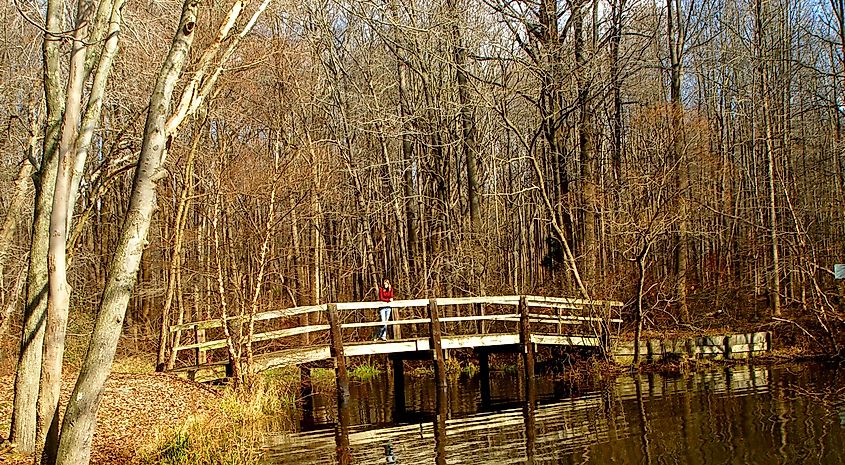
Working our way from north to south, Lums Pond is Delaware's largest freshwater pond. This 200-acre, v-shaped body of water is encompassed by Lums Pond State Park, which includes the Lums Pond Woods Nature Preserve, providing a safe and enjoyable place for camping, paddleboarding, pedal boating, picnicking, and even ziplining, thanks to Go Ape Zipline & Adventure Park. There is also a network of four, multi-use trails that weave around the shoreline and through the surrounding woodlands and wetlands. Some are designated for hiking, mountain biking, and even equestrian, while others are handicap accessible and/or designated as pet-friendly.
Along with being a summertime retreat for us humans, Lums Pond is an ideal sanctuary for certain snakes. First and foremost, the common watersnake (Nerodia sipedon), aka northern watersnake, does well in these parts. Easily able to navigate the sizable but calm pond, this proficient swimmer subsists on fish and frogs. At around three feet in length with a brown, gray, or reddish base and dark cross-bands, the common watersnake is often mistaken for the venomous eastern copperhead, which is not known to exist within Lums Pond State Park. Fortunately, this species is harmless, unless aggressively provoked. Other expected encounters come from the black racer (Coluber constrictor) and eastern rat snake (Pantherophis quadrivittatus), both of which have long black bodies, and common garter snake (Thamnophis sirtalis). Less likely to be spotted, though presumably present, are the ring-necked snake (Diadophis punctatus) and common worm snake (Carphophis amoenus).
Should you wish to see some of these snakes but fail to in the wild, pop by the Whale Wallow Nature Center. Along with affording floor-to-ceiling window views of the park and providing educational resources, this facility boasts a 500-gallon fish tank, and live reptile and amphibian exhibits.
Garrisons Lake
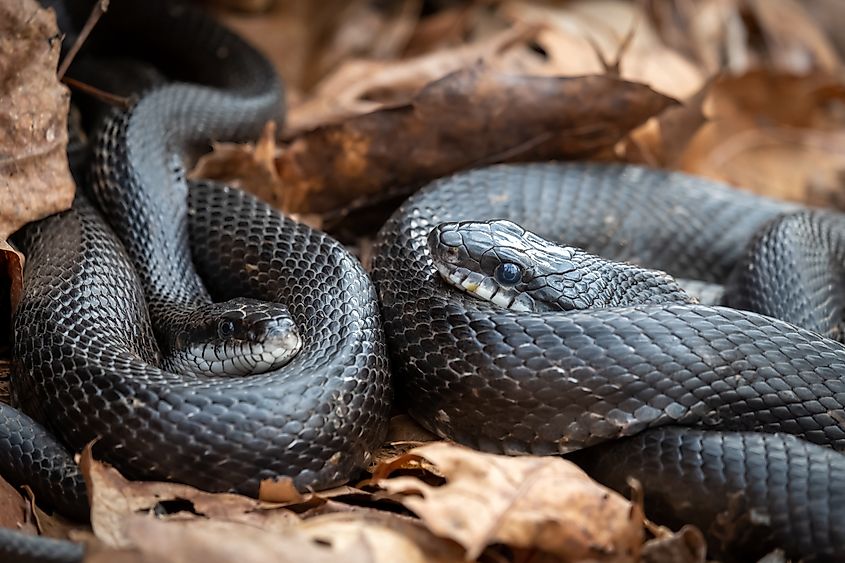
Shifting down to the central part of Delaware, Garrisons Lake is the next body of water around which both humans and snakes congregate. This 86-acre watering hole is fed by the Leipsic River, as well as several small streams. Though bordered by the DuPont Highway (i.e. U.S. Route 13) to the east, and residential areas to the north and south, Garrisons Lake is also buffered by farmlands, wetlands, and dense vegetation. Ultimately, it is a perfectly viable microcosm for not only fishing and boating, but the everyday doings of three snakes in particular: the northern watersnake, common garter snake, and eastern rat snake.
Since we've already met a few of these slippery residents, let's turn our attention to the common garter snake. Growing to about two-and-a-half feet in in length, exhibiting a greenish-brown base with a yellowish dorsal stripe and checkered black spots on either side, this non-venomous species is frequently spotted not only around Garrisons Lake, but all across the state, country, and continent (moreso Canada than Mexico). It, too, feeds on frogs and fish, plus whatever slugs and other critters it can sink its modest fangs into. Common garter snakes are not actively aggressive towards humans, nor are they capable of causing significant harm (other than potential infection) if a strike were to occur.
Silver Lake
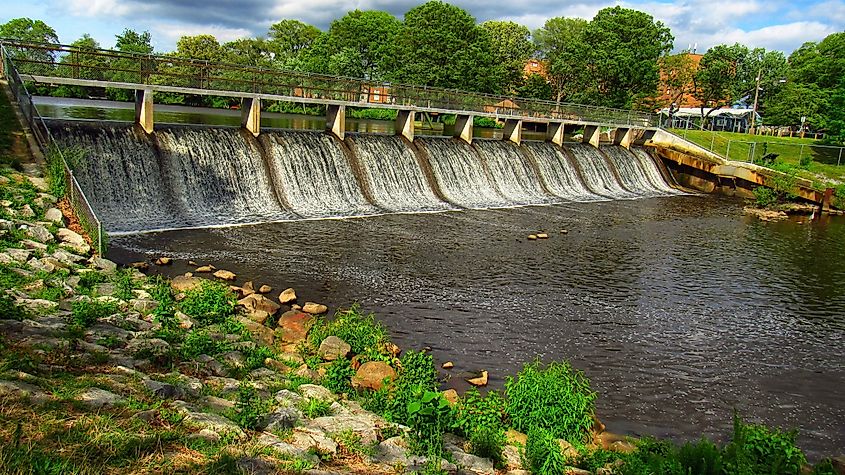
Minutes south of Garrisons Lake, Dover's Silver Lake (not to be confused with the coastal lake just south of Rehoboth Beach), is another hot spot for interspecies activity. Paralleled by the DuPont Highway and bisected by North State Street, Silver Lake gets a solid dose of car, foot, and watercraft traffic. This sinuous urban waterway is also surrounded by residential neighborhoods, and attractions such as the 182-acre Silver Lake Park, Silver Lake Beach, the Delaware Agricultural Museum, Delaware State University, and many pubs and eateries.
In terms of its serpents, common watersnakes are once again frequently spotted, both in the lake and sunning themselves around the shoreline. The odd eastern kingsnake (Lampropeltis getula), aka common kingsnake, has also been known to make an appearance. Though somewhat intimidating in appearance due to its four-foot, jet-black body with thin, white crossbands, this colubrid is non-venomous and more interested in hunting lake-based prey such as rodents, birds, and even other snakes, than messing with beachgoers.
Red Mill Pond
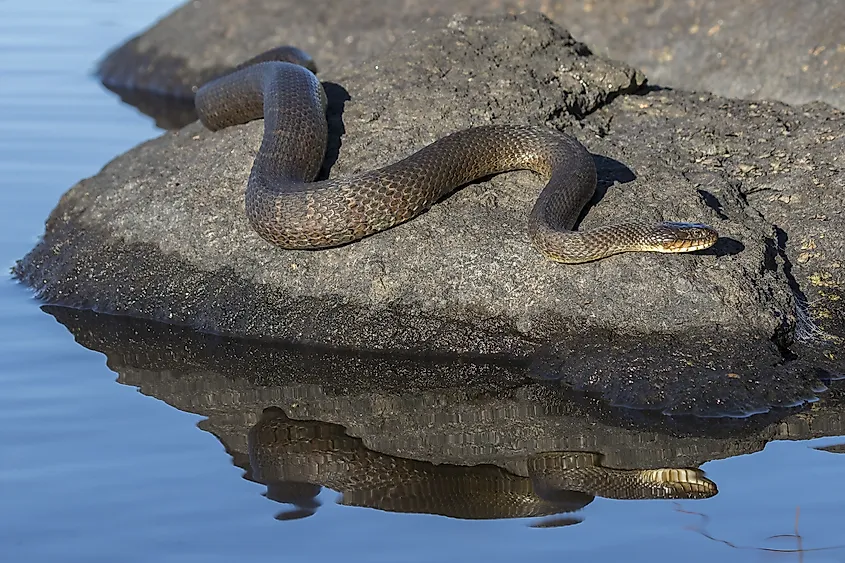
Red Mill Pond is also the focal point of a suburban neighborhood, this time right next to the Coastal Highway (i.e. Delaware Route 1). This 150-acre, shallow water body branches into various minor tributaries, including Love Creek, and is fed by numerous springs and significant surface drainage. It provides locals with a place to cast a line, bust out those bird-watching binoculars, and even get out boating.
Histrocially, Red Mill Pond, with its tranquil waters and bordering wetlands, has attracted a wealth of fish, amphibians, small mammals, and in turn, snakes. Unfortunately, because of Lewes' expanding housing developments, fertilizer and pesticide run-off has impacted the water quality, leading to toxic algae blooms, and demonstrably impacting the local fish and wildlife populations. Nonetheless, species such as the common watersnake and common garter snake, including the zippy eastern ribbon snake subspecies, are sure to be found amongst the logs and the reeds, doing their best to adapt to this ever-urbanizing world.
Trap Pond
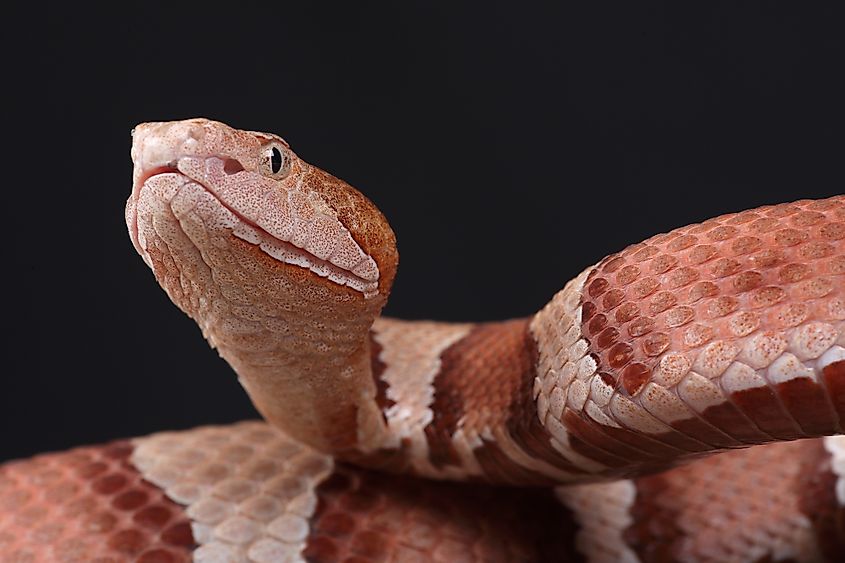
Similar to Lums Pond, Trap Pond is a marquee attraction within the broader state park by the same name. But unique to Trap Pond State Park is its baldcypress swamp, the northernmost, naturally-occuring example of this habitat in the country. Such a blend of open water, swamplands, and ample wooded dryland promotes exceptional biodiversity and outdoor recreation. Paddlers have free reign, but Trap Pond also offers pontoon boat tours for those looking for an easy-going approach. Hikers will also feel right at home here, thanks to the 4.6-mile looped Bob Trail. And finally, the scenic state park campground provides a range of RV and tent sites, plus climate-controlled cabins and even yurts.
As for our subject in question, the Baldcypress Nature Center hosts an interactive gathering for World Snake Day in July. This program includes a discussion on the critical ecological roles these misunderstood creatures serve, as well as an introduction to the facility's captive snake, and a wild snake hike to cap it all off. Participants of the latter might see such characters as the northern water snake and common garter snake, but it is also possible, since Trap Pond falls within southern Sussex County, that an eastern copperhead (Agkistrodon contortrix) makes an appearance. With that said, it is far more likely to misidentify a watersnake than it is to come across Delaware's only venomous snake. But just in case, the way to distinguish a copperhead is by its aptly copper-colored head, vertical pupils (like a cat), and most of all, its dark, hourglass-shaped crossbands.
Run-ins with copperheads are already doubtful in Delaware, but even if this does happen, like most snakes, venomous ones would rather flee than fight. Even if a bite does take place, 25% of them turn out to be "dry bites," meaning that no venom was injected. This makes perfect sense, since copperheads need this hemotoxin in order to subdue smaller prey, and it takes time to regenerate. If you do see an elusive copperhead in the wild, and in the unlikely event that it does strike with a venomized bite, death is extremely rare; however, you should still seek immediate medical attention.
Bonus: Delaware River

Originating in Upstate New York, and defining the border between eastern Pennsylvania and Western New Jersey before emptying into Delaware Bay in its namesake state, the 330-mile Delaware River deserves a shoutout. Many of the aforementioned snake species can be found in the green spaces surrounding its main artery and many tributaries. For insance, Augustine Wildlife Area, Cedar Swamp Wildlife Area, and Bombay Hook National Wildlife Refuge, with their lush marshlands full of fish, birds, and small game, provide ideal cover, calm waters, and prey for Delaware's mid-sized serpents. It should also be noted that, because the Delaware River flows alongside eastern Wilmington, the eastern copperhead might be found in non-urbanized swaths around the river. Specifically, a small population is known to exist in the Alapocas Run State Park just north of the city, which forms a contiguous and serpentine protected space with Bellevue State Park over to the riverside Fox Point State Park.
Parting Thoughts
It turns out the Firssst Ssstate does have its share of snakes - 19, to be precise. Of that lot, a common core of species tends to congregate around Delaware's public ponds and lakes. While it may be startling to see any type of snake sunning on a log, swimming in still waters, or slithering through the grass, once the initial shock subsides, simply step back, leave it be, and take solace in knowing that the vast majority of encounters will be with non-venomous species. If you think you spotted a copperhead (again, note the dark hourglass splotches), or any other variety that you're unsure of, take stock of its characteristics or snap a picture from a safe distance, if you can, and report it to park staff or other local authorities for identification and tracking. Otherwise, just get out there on your kayak, lace up for that hike, or do whatever your summertime mood dictates. Snakes can have their fun, and we can have ours.
